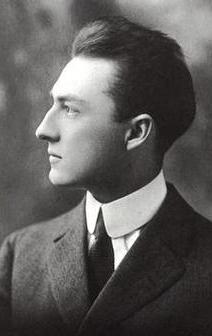I have been rereading William Carlos Williams'Spring & All in the 1970 Frontier Press edition. That edition reprints the original 1923 Contact Press edition published in a run of 300 copies and allowed to go out of print more or less immediately. The work has been available also since 1971 in the New Directions collection, Imaginations, a volume that crams together Williams' five most important prose works into what, to my eye, is a more or less unreadable crowd. That collection is so poorly done as to constitute an act of vandalism.
But if there is a single book that strikes me as representing the apotheosis of modernist writing, the single work that no other poet or writer could go “beyond” (tho Zukofsky’s “A”-22 & 23, which may also be the very last major text of the modernist movement, comes very close), Spring & All is it. Not coincidentally, it includes Williams’ best poetry and does so, for example, in a way that demonstrates how radically more a poem such as “Red Wheel Barrow” can be.
The book when it first came out did not have the impact on the world that it could have had with halfway decent distribution (equivalent, at least, to the self-publishing of Tender Buttons some 18 years earlier). The poems survived, and flourished, because Williams put them into other collections, most notably the Collected Earlier Poems. But the total book, which is where these poems make by far the most sense, stayed out of print until 1970 when Frontier Press brought out its edition just as New Directions was readying Imaginations.
For all I know, Harvey Brown’s Frontier Press might not have printed any more copies than did Contact Press. But through Serendipity Books in Berkeley, the forerunner to today’s Small Press Distribution, it reached a much wider range of readers very quickly. Suddenly the essays of Charles Olson no longer seemed so “out there” as the most significant act of theoretical/critical writing since Ezra Pound. And Williams, far from the charming local doc from
Of the works that separate out the New American Poetries of the 1950s, which include some work by New Americans, such as Creeley’s Pieces and Ashbery’s Three Poems, as well as Oppen’s Of Being Numerous & the late work of Zukofsky, Spring & All is one of those books that shows decisively just how far New American Poetry did NOT go. It had as much impact as any of the early books by Clark Coolidge, maybe as much as Grenier’s essays in the first issue of This.
But then it went out of print again, leaving only the crowded phone booth that is Imaginations for new readers interested in obtaining it. Of all the great books of that hinge moment in American poetry, this is the text that the fewest young readers have had a chance to see in its best possible format.
I had imagined that since any work published prior to 1923 was now in the public domain, that within a year or so, Spring & All would be as well. And this is a text I feel strongly enough about that I could imagine publishing it myself (not that I have the resources to do so). But now I realize that this impression was a misconception. The nature of the law is such that works published in 1923 or after, at least up until the 1970s, belong to a 95-years after publication rule. That would not put Spring & All into the public domain until 2018.
Which means that I can’t coax Chax or Green Integer or City Lights or whomever to do the right thing and bring this book back in the format that makes the greatest sense, as a small book that just about fits into your pocket. At least not for another decade.
And this makes me feel bereft.






